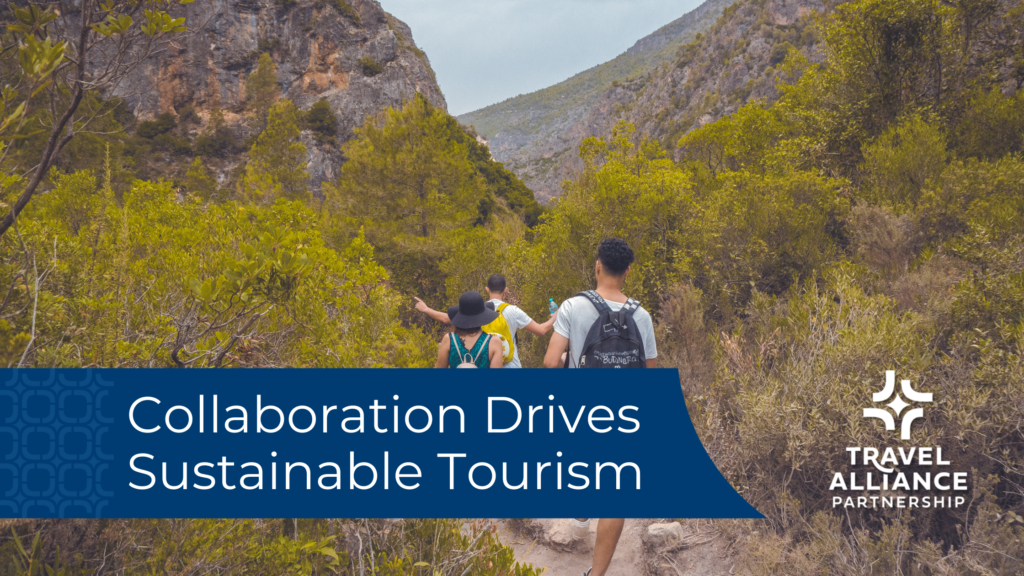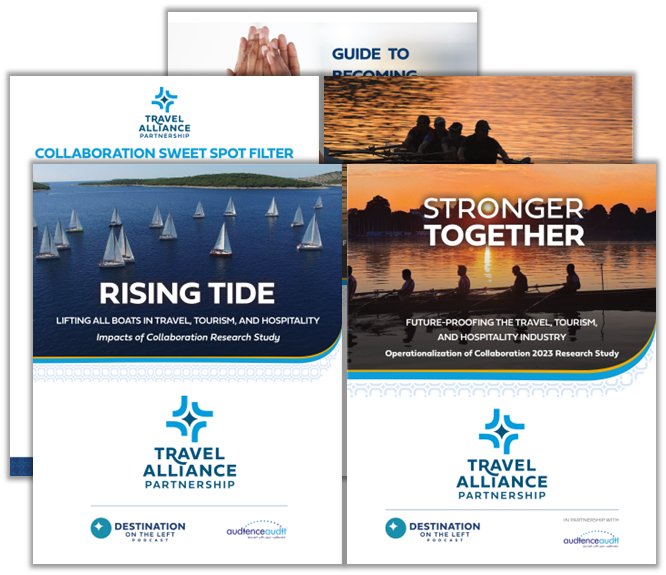Collaboration Drives Sustainable Tourism
Sustainable tourism has growing importance in the world of travel and tourism. As destinations grow in popularity, they need to collaborate closely with residents, local businesses, and tourists to ensure they are creating a meaningful experience for their visitors without causing a negative environmental impact.

Why is Sustainable Tourism Important?
Sustainable tourism is critical for maintaining the natural beauty of a destination, minimizing littering and waste, protecting cultural and historical sites, and respecting the local communities. On Destination on the Left episode 290, we spoke with Professor Joe Conto, Dr. Eric Holmund, and Dr. Kelly Cerialo of Paul Smith’s College about why sustainability is an issue that destinations shouldn’t wait to address. They told us that more than ever, tourists are leaving the cities and visiting natural destinations like national parks and popular hiking spots. In order for places like this to avoid getting overrun and maintain the beauty that makes them so special to begin with, destinations need to recognize that sustainability is a necessity not just in tourism, but in every industry.
Collaboration Between Communities and Travelers
As a destination, you might be wondering how you can achieve sustainability while still increasing visitation. Through conversations with several industry professionals that recognize the importance of sustainable tourism, we’ve learned that it cannot be a one-sided effort. All the stakeholders need to be involved including the DMOs, residents, governments, local businesses, and visitors.
Jennifer Wesselhoff spoke with us on episode 223 about her experience leading the development of Arizona’s first sustainable tourism plan when she was with the Sedona Chamber of Commerce & Tourism Bureau. She learned that even though tourism was having a huge economic impact on Sedona, residents were struggling with things like traffic congestion, parking issues, noise, and short-term rentals. As a result, Sedona put forth a collaborative effort with the community to evaluate just how sustainable the city was. One of the most important parts of this process was including residents and local businesses in the conversation.
As a result of the whole community’s efforts, Sedona increased their role in visitors’ behavior by encouraging walking and the use of public transportation. They also implemented a Leave no Trace program and diverted visitors from the popular hiking trails by helping them find hidden gems. All these changes had a positive impact on residents of Sedona and made it possible for Sedona to maintain its status as a popular tourist destination, without having a negative impact on residents or the environment.
Looking to the Future
While every destination is unique, we all can learn from the model set forth by Sedona. The job of a DMO doesn’t stop after visitors arrive in a destination, they also have a responsibility to impact visitor behavior while there. As champions of the tourism industry, we want destinations to continue to thrive and see a rise in visitation. This is why it is so important that DMOs learn more about sustainable tourism and collaborate with their communities to protect the environment and the quality of life for residents. If they do this, destinations can remain beautiful places to visit for generations to come.
Author
Related Posts
How Tourism Brand Ambassadors Elevate Your Destination Story
In today’s world, it can seem like everything in marketing and sales has changed. But the one thing that hasn’t changed is the value of...
The Rise of Heritage Travel: Finding Cultural Connections
People often say they are traveling to “find themselves,” and heritage travel is quickly becoming one of the most meaningful ways for travelers to explore…
